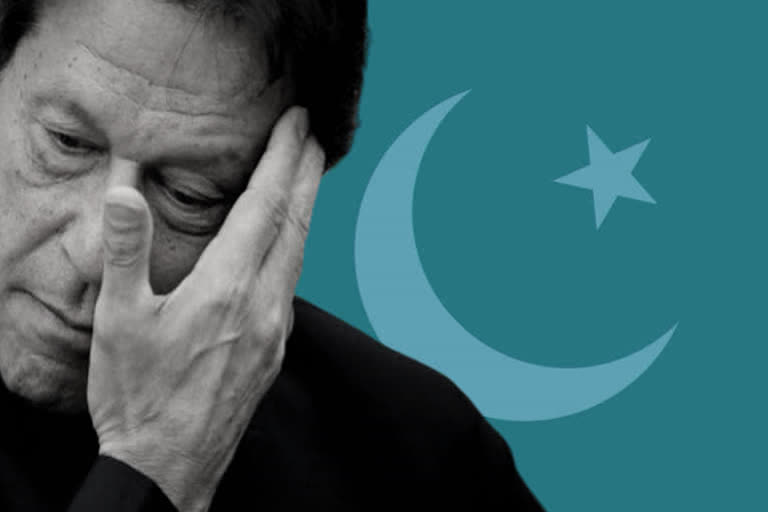New Delhi: On 21st February, the Financial Action Task Force (FATF) decided that Pakistan would remain in the list of “Other Monitored Jurisdiction” (commonly known as the Grey List) till June, 2020 when the Organisation’s plenary meets again at its Head Quarters in Paris.
Pakistan was initially placed in the Grey List in June, 2018 and was given time until October, 2019 to prove a discernible progress in acting strictly in accordance with the guidelines of FATF.
In order to understand the impact of the recent decision on Pakistan, we will have to have an idea about FATF, its membership, work and procedures.
FATF was established in 1989 as a body to set standards and promote effective implementation of legal, regulatory and operational measures for combating money laundering, terrorist financing and other related threats to the integrity of the international financial system. It monitors the effectiveness of the measures taken by countries for AML (Anti Money Laundering) and CFT (Combating Funding of Terror).
As such, it is a policy making body which makes strong recommendations to world community. Currently, it has 39 members (37 countries and two regional organisations- European Commission and the Gulf Coordination Council).
While all the major economic powers are its members, from Asia only Japan, India and Malaysia are members, thus excluding Pakistan. FATF also has eight associate members which are regional bodies mandated to address the issues of money laundering and terror funding.
India and Pakistan are members of one such body- Asia pacific Group (APG). Besides, FATF has ten observer organisations- most of them regional banking or economic entities including the World Bank. Its President is nominated for one year (from July to June) on rotation basis among the member countries.
China is the current President. Every year, FATF holds three plenary meetings in February, June and October to discuss and decide the compliance of the countries under monitoring.
There are 40 essential criteria and nine additional criteria on which the country monitored for AML/CTF is judged. While essential criteria are a must to meet, additional criteria are optional and only help FATF to make a decision.
The essential criteria are mostly related to putting in place a system to check the ML/FT crimes such as customer due diligence, transparency of financial transactions, proper record keeping and reporting of dubious transactions to the national authorities investigating economic offences. As mentioned above, FATF has to decide whether, on the basis of compliance judged on the parameters of essential criteria, to put a nation in the Grey list or the “Call for action” list (Black list).
At present, there are fourteen countries including Pakistan in the Grey List while the Black list has only two- Iran and North Korea. For any country to be included into or deleted from the grey List, vote of at least twelve countries is required.
However, for deletion from the Grey List, an on- site inspection and favourable report by FATF is also required. For moving any country already in Grey List to Black List, vote of at least 37 member countries is required.
This is why Pakistan has skipped being placed in the black List because on both occasions, in October, 2019 and February, 2020, China, Malaysia and Turkey voted against the move to Black list Pakistan.
Read: Pakistan to remain in FATF's grey list
In October, 2019 Pakistan was found wanting on 22 out of 27 action points based on 40 criteria. This time, FATF observed that Pakistan has largely addressed 14 of 27 given action points, with varying levels of progress made on the rest of the action plan.
The FATF also strongly urged Pakistan to “swiftly complete its full action plan by June 2020. Otherwise, should significant and sustainable progress especially in prosecuting and penalising TF not be made by the next Plenary, the FATF will take action, which could include the FATF calling on its members and urging them to advise their financial institutions to give special attention to business relations and transactions with Pakistan”.
This means the sword is still hanging over Pakistan and if it fails to complete its full action by the next plenary, its trade and business transactions will come to a standstill bringing it to a total bankruptcy and chaos.
Read: Pakistan's propaganda on FATF proven false: India
This is why Pakistan is desperately trying to get out of the troubled waters with help of its three friends. The problem in Pakistan is the infamous nexus between its armed forces and terrorist outfits which are established, sponsored and sent across the border to India.
The childish excuse made by Pakistan in the Plenary that Azhar Masud, founder chief of Jaish-e-Mohammed was missing and could not be located in Pakistan. India punctured the Pakistani lie.
While all other big members including USA stood with India, China reluctantly supported Pakistan on the pretext that Pakistan deserved one more chance.
It remains to be seen whether Pakistan is able to rein the terrorist groups in and show sustainable and clear actions to FATF by the coming June. Till then, the danger of imminent bankruptcy looms large over Pakistan.



